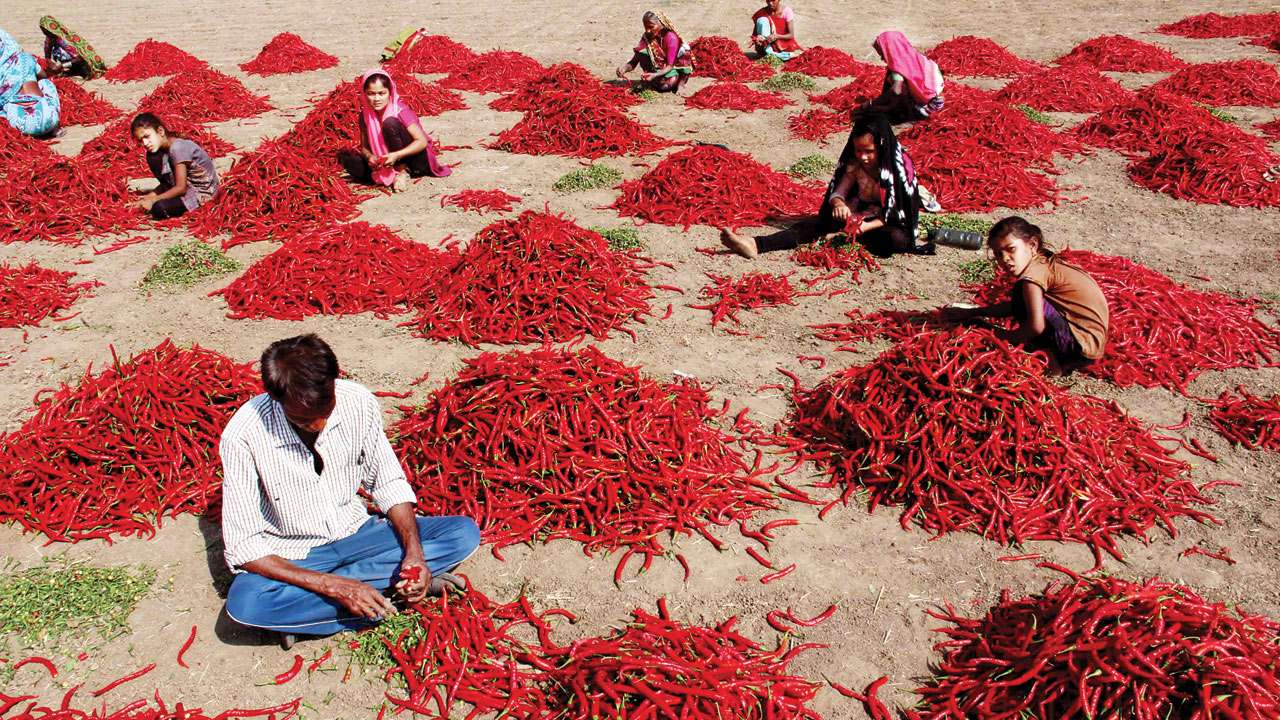
Budget, in principle, is a statement of annual accounts with estimates of revenue and expenditure. However, it also offers an opportunity to define new vision and articulate needed reforms.
It is therefore appropriate to read the annual Budget as integral to the vision and larger policy framework of the government.
In case of agriculture, this government’s vision is farmers’ total welfare. The strategy is focused around securing a time-based rise in their income and supplementing it with various social services, including direct income support transfers. This amounts to a paradigm shift in the production-centric agriculture as practised till recently.
The government’s strategy to double farmers’ income by 2022, and sustain continued increases thereafter, entails liberalisation of agriculture.
Crying for attention is the need to treat all sub-sectors of agriculture on a par. Another area is to practise agriculture as a value-based system with farmer as the entrepreneur at the fulcrum.
Let us test the Budget on these touchstones. In recent years, especially beginning 2016-17, several policy changes have filled a positive content in this context. This Budget fits well with this space, and a positive spirit in favour of farmers and farming can be gleaned from the finance minister’s opening propositions.
One of these was, “Reform, Perform and Transform”; the other was “physical connectivity is the life blood of our economy”. What in parallel matters more than budgetary allocations is the efficient use of capital investments.
The resolution to this lies in upgrading the quality of infrastructure, manpower and the institutional mechanism. The Budget addresses these aspects well.
One structural weakness affecting agriculture is land division and fragmentation. This is addressed by committing 10,000 new Farmers Producers Organisations by 2022. The income tax exemption to FPOs was earlier given in Budget 2018.
Another weakness negatively impacting monetisation is poor road connectivity between production and consumption zones. A study for the year 2012-13 by CIPHET revealed that food loss was as high as Rs 93,000 crore in the country.
The budgetary support for both rural roads and state highways will negotiate this critical gap. The allocation of Rs 80,250 crore under the Pradhan Mantri Gram Sadak Yojana (PMGSY) Phase III that will upgrade the quality of 1,25,000 km of roads, will integrate the agricultural produce with the markets over space and let the farmers gain greater value.
An important aspect of transforming agriculture is to re-mandate it to generate employment and income, and not merely to support food security.
In line with this, there is a reference to shift the status of farmers from Annadata to Urjaadata. This sets the context for the farmers to go beyond conventional crop production and adopt solar or other energy sources, such as bio-methanation, and enrich their income bouquet.
Rural prosperity, notwithstanding emerging structural diversity, is still majorly predicated upon agriculture, whose state can be improved by facilitating it to generate gainful jobs and incomes.
The Budget supports job creation through 100 new clusters of industries based on bamboo, honey and khadi .
In addition to 50,000 jobs for artisans, the farmers will find new market avenues for their primary and secondary produce. ASPIRE is another scheme that targets to skill 75,000 entrepreneurs in the agro-rural industry sector, besides setting up 80 livelihood business incubation centres and 20 technology business incubators.
Both these schemes fall within the ambit of secondary agriculture, and directly address the existing lag pertaining to both land and manpower use in the farm sector.
Besides soil, water, a critical input, has emerged as a challenge in sustaining agriculture. The new ministry of Jal Shakti now stands mandated through the Budget to focus on integrated demand and supply side water management at local level. This will bring in water use efficiency in various domains, including agriculture.
On the other front, oil-seed production is rightly supported, whose deficit is now costing the exchequer Rs 70,000 crore annually. The dairy and fishery sectors are well recognised. The Pradhan Mantri Matsya Sampada Yojana will bridge the gaps in production and marketing infrastructure in the fisheries domain.
The emphasis on promotion of dairy cooperatives will increase the organised milk sector from the present lows of 20%.
The Budget also brings much-needed focus on post-harvest management by supporting greater coverage under the National Agriculture Market or e-NAM, a mechanism for direct marketing of vegetables, fruits, dairy and fishery products, interlinked warehouse and logistics infrastructure, among others.
Gross capital formation in agriculture bears a direct correlation with growth rates, and the Budget invites attention on private investment. The ground was laid earlier through the new Model Acts on agricultural marketing, contract farming and services, and gramin agricultural markets.
This trend is buttressed by liberalised foreign direct investment and micro, small and medium enterprise credit up to Rs 1 crore and other triggers for start-ups.
The Budget also targets 20 million rural population, including farmers, under digital education; promoting ease of life and ease of doing agri-business.
The Budget clearly shows a continuity of the vision of the prime minister and a consistency in policy reorientation to improve the lot of the farmers.
The author is a civil servant in the ministry of agriculture and farmers welfare and has chaired the government panel, set up in 2016, on doubling farmers’ income by 2022. He now heads the empowered body. Views expressed here are personal